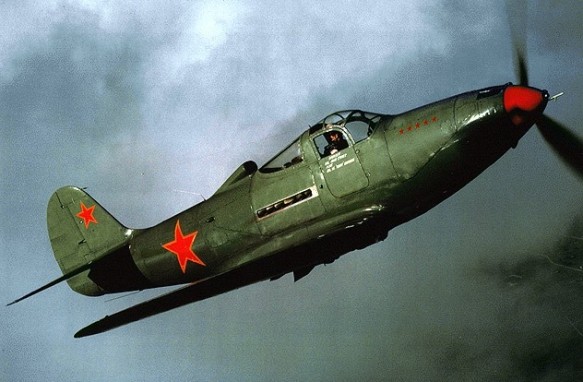Soviet Guards Fighter Aviation Regiment 16 GIAP (to which some of the top Airacobra aces, including Aleksandr Pokryshkin belonged) scored an average of 9.5 victories for every pilot casualty whilst flying the Airacobra during the period April 9, 1943 through September 21, 1943.
The stopping power of the cannon was appreciated, despite the slow rate of fire. From 1943, Soviet pilots were instructed in Pokryshkin’s tactics of climbing above the enemy, diving to gain speed, maneuvering close for target acquisition, and firing short bursts from very close range. In such circumstances, the rate of fire would not be such a consideration since one or two well-placed rounds might suffice to bring down an aircraft. The concentrated fire from the nose-mounted weapons would of course enhance the effectiveness of a burst.
The following is taken from: Air Enthusiast, Vol 1 Number 3. August 1971. “The Calamitous ‘Cobra” p134-143
Extracts in the article are taken from the Air Fighting Development Unit (AFDU) Report on the Airacobra, dated September 22, 1941. The entire report is not reproduced here, however all aspects of the PERFORMANCE of the aircraft is repeated insofar as it addresses its combat potential. All negative comments are repeated. Anti-P-39 folks be warned: the following contains material you will not want to know.
“….pleasant to fly and very easy to take-off and land. The controls are well balanced and although heavier than those of the Spitfire at normal speeds, do not increase appreciably in weight at high speed as in the Spitfire. It is difficult to hold the aircraft in a dive at high speed unless it is trimmed nose heavy. During a turn the Airacobra gives ample warning of a high speed stall by severe vibration of the whole airframe.”
Handling in formation and formation attacks was found to be good, although deceleration was poor because of the Airacobra’s aerodynamic cleanliness. Take-offs and landing in close formation were not considered practicable since, although it was possible to check a swing, there was considerable difficulty in bringing the aircraft back to its original path.
At the Airacobra’s rated altitude of about 13,000 ft it was approximately 18 mph faster than the Spitfire VB. However, the speed fell off rapidly above that height and the two types were almost exactly matched at 15,000 ft.
To assess the Airacobra’s maneuverability in dog-fighting, the AFDU compared it with a Spitfire VB and a Bf 109E, and reported as follows: “The Airacobra and the Bf 109 carried out dog-fighting at 6,000 ft. and 15,000 ft, the latter aircraft having a height advantage of 1,000 ft in each case. The Bf109, using the normal German fighter tactics of diving and zooming, could only get in a fleeting shot.
“The Bf 109 cannot compete with the Airacobra in a turn and even if the Bf 109 is behind the Airacobra at the start the latter should be able to shake him off and get in a burst before two complete turns have been carried out.
“The Bf 109 then tried diving on the Airacobra from above and continuing the dive down to ground level after a very short burst of fire. It was found however that the Airacobra could follow and catch up on the Bf 109 in a dive of over 4,000 ft.”
“The Airacobra then carried out a similar trial with the Spitfire V, and it was found that although the Airacobra has a superiority of speed it was out climbed and just out-turned by the Spitfire.”
“These combats show that when fighting the Bf 109E below 20,000 ft the Airacobra is superior on the same level and in a dive. Unless it has a height advantage the Airacobra could not normally compete with an aircraft similar to the Spitfire V. If on the same level or below, at heights up to about 15.000 ft, the Airacobra would have to rely on its superior level and diving. speeds and its ability to take negative ‘G’ without engine cutting. Above this height , the Airacobra loses its advantage in level speed. Both the Spitfire VB and the Bf 109E have a superior climb to that of the Airacobra.”
My reading of these words indicates a good low-altitude fighter to be treated with respect, if competently flown, by at least the two opponents against which it was compared. Thus, its success in the hands of the Russians should not be all that surprising.
If I were an RAF pilot in the fall of 1941, I think I’d rather be going off to war in this airplane than in, say, the hapless Typhoon when tail-less versions of the latter were raining down on the RAF’s head.
